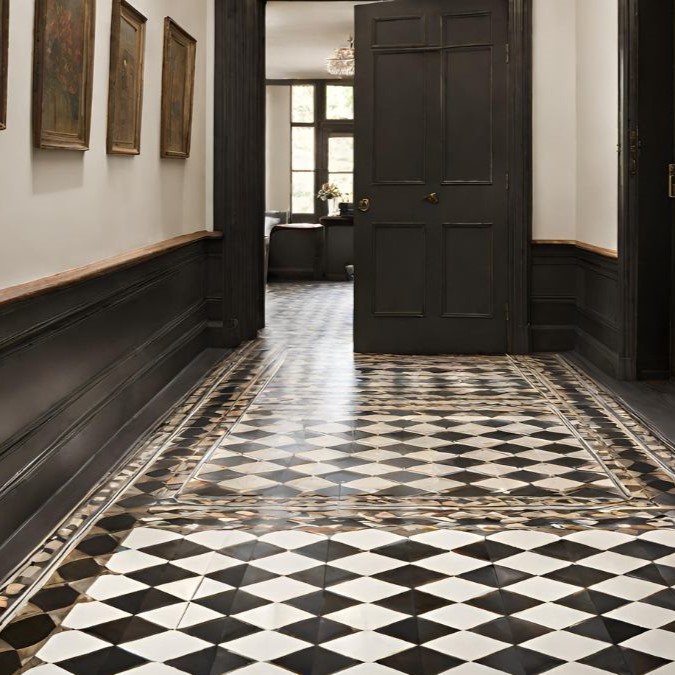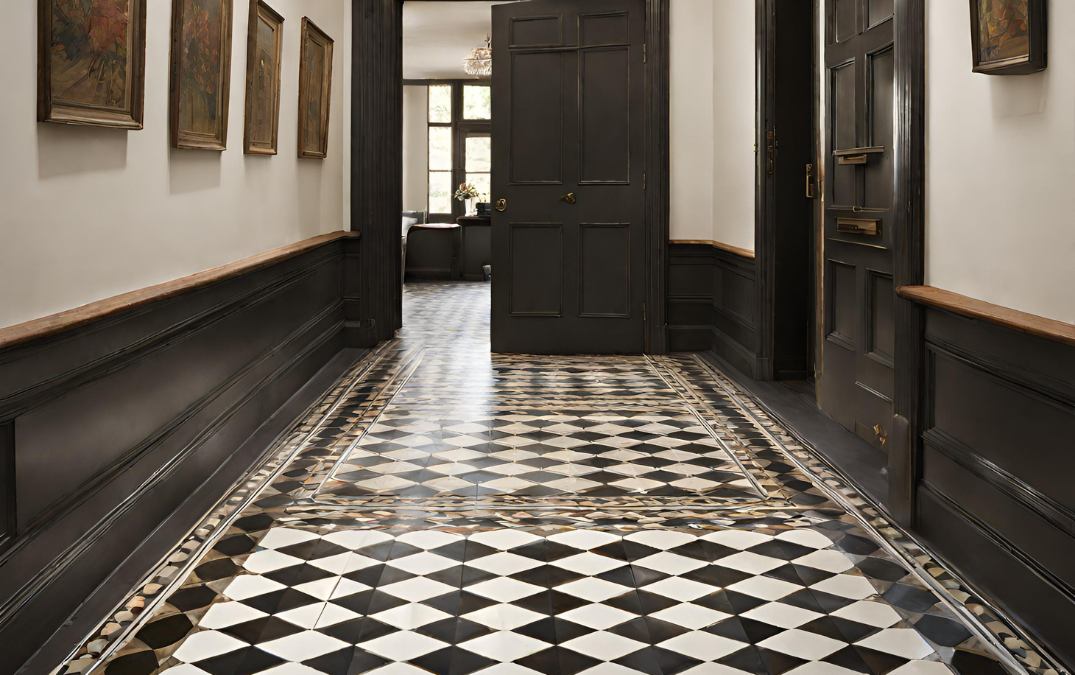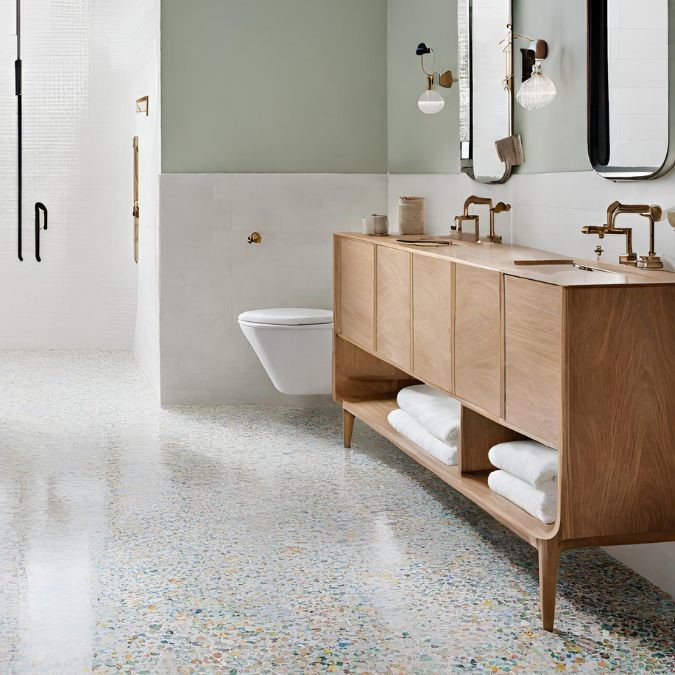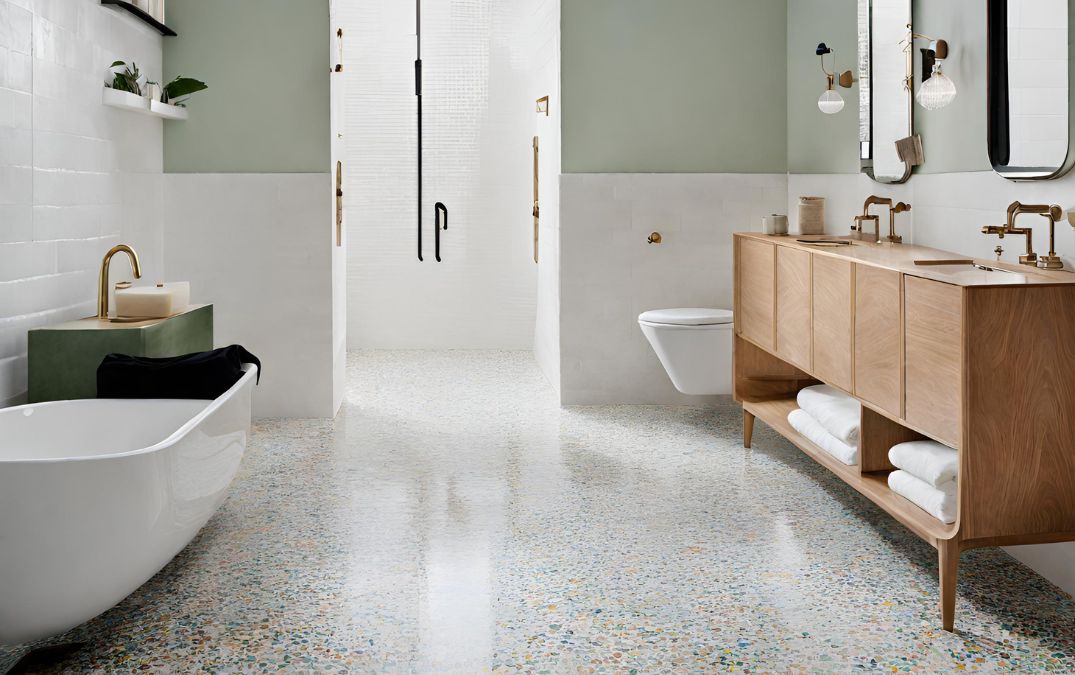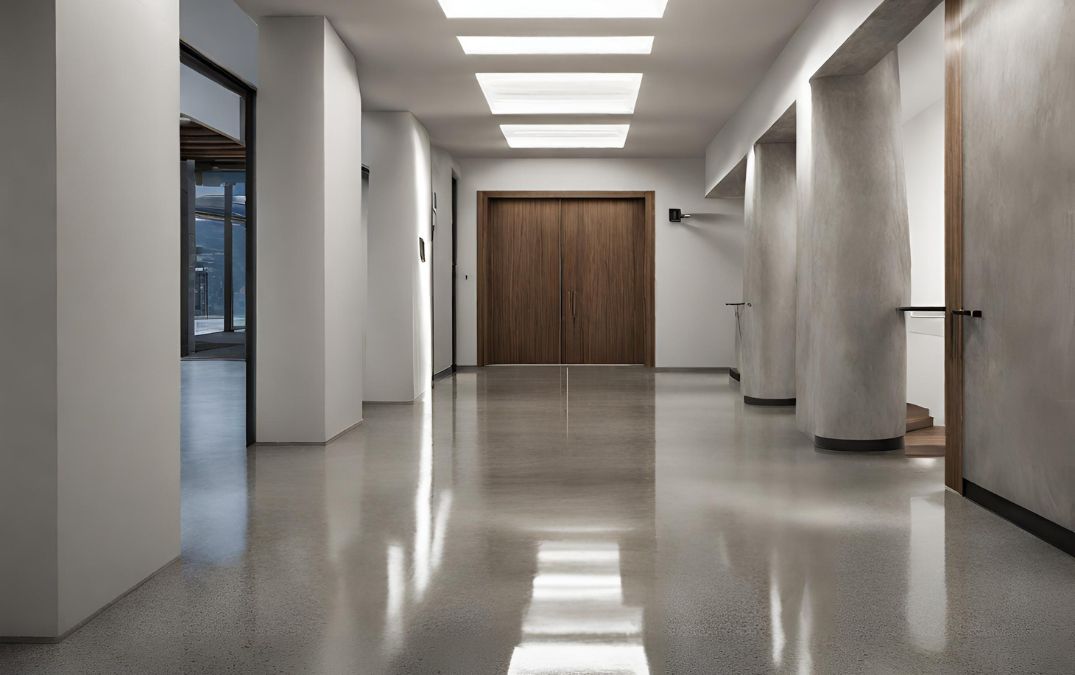Tiling is the Cheaper Short Term Option
When you're sizing up the costs per square meter for polished concrete flooring versus tiled flooring, there's a bit to unpack. Polished concrete, if you're starting from scratch or need a concrete overlay, can set you back anywhere from £25 to £120 per square meter. This wide range is because of a few variables. If your existing concrete is in bad shape and needs an overlay before polishing, you're looking at the higher end of that spectrum.
Now, swing over to tiled flooring. The cost can range broadly, from as low as £20 per square meter for basic tiles to upwards of £100 or more for high-end or designer tiles. But remember, tiling isn't just about slapping tiles down. There's the cost of the adhesive, grout, and, not to mention, the labor, which can be pretty intensive, especially for intricate patterns or larger areas. Tiling can quickly become a pricey affair, especially if you've got a taste for the finer tiles.
So, when you break it down, both polished concrete and tiling come with their own set of costs and considerations. Polished concrete might seem steep initially, especially if an overlay is needed, but its durability and low maintenance can make it more cost-effective in the long run.
